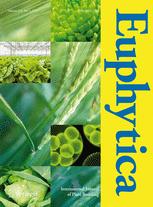Ver ítem
- xmlui.general.dspace_homeCentros Regionales y EEAsCentro Regional Salta - JujuyEEA SaltaArtículos científicosxmlui.ArtifactBrowser.ItemViewer.trail
- Inicio
- Centros Regionales y EEAs
- Centro Regional Salta - Jujuy
- EEA Salta
- Artículos científicos
- Ver ítem
Characterization of common bean wild populations for their in situ conservation in Northwestern Argentina
Resumen
In situ conservation of wild species is a method of conservation that allows keeping populations in their natural environments, and set the strategies for maintaining the natural populations. The Active Bank of Northwestern Argentina (BANOA) is in charge of the in situ conservation of wild populations of common bean (Phaseolus vulgaris L.) in Northwestern Argentina (NOA), and has an ex situ collection of 401 landraces and 221 wild accessions from the NOA.
[ver mas...]
In situ conservation of wild species is a method of conservation that allows keeping populations in their natural environments, and set the strategies for maintaining the natural populations. The Active Bank of Northwestern Argentina (BANOA) is in charge of the in situ conservation of wild populations of common bean (Phaseolus vulgaris L.) in Northwestern Argentina (NOA), and has an ex situ collection of 401 landraces and 221 wild accessions from the NOA. We evaluated the phenotypic diversity of 68 common bean wild populations from the NOA both in protected and unprotected areas, finding a moderate variation among them. Ten phenotypic reproductive characteristics related to pod and seed displayed significant differences in the analysis of variance; these traits together with the seed weight were the basis for the multivariate analysis. The cluster analysis ordered the populations in 12 groups but trends in geographical distribution or phenotypical variation were not recognized. For the conservation in situ of the wild bean populations, their diversity should be considered. Two types of populations can be highlighted: (i) candidates for in situ conservation in order to preserve the novel variation generated by convergence with cultivated sympatric germplasm (populations 433, 437, 471, 509, 513 and 517) and (ii) those whose phenotype represents clearly the wild status and should be preserved in situ as such in their current status (populations 480, 495, 496, 525 and 533).
[Cerrar]

Autor
Fuente
Euphytica 213 : 186 (August 2017)
Fecha
2017-08
ISSN
0014-2336
1573-5060
1573-5060
Formato
pdf
Tipo de documento
artículo
Palabras Claves
Derechos de acceso
Restringido
 Excepto donde se diga explicitamente, este item se publica bajo la siguiente descripción: Creative Commons Attribution-NonCommercial-ShareAlike 2.5 Unported (CC BY-NC-SA 2.5)
Excepto donde se diga explicitamente, este item se publica bajo la siguiente descripción: Creative Commons Attribution-NonCommercial-ShareAlike 2.5 Unported (CC BY-NC-SA 2.5)

